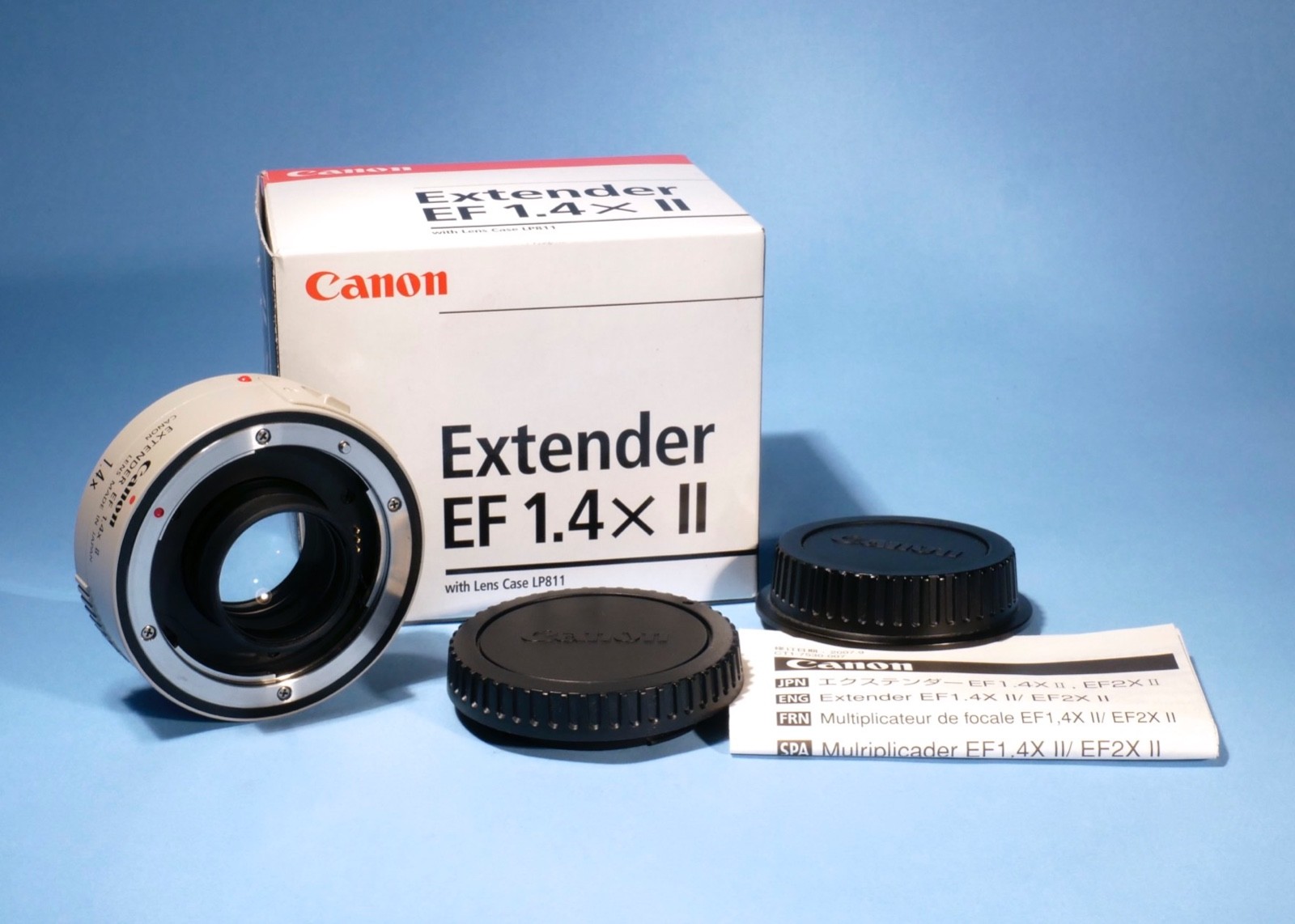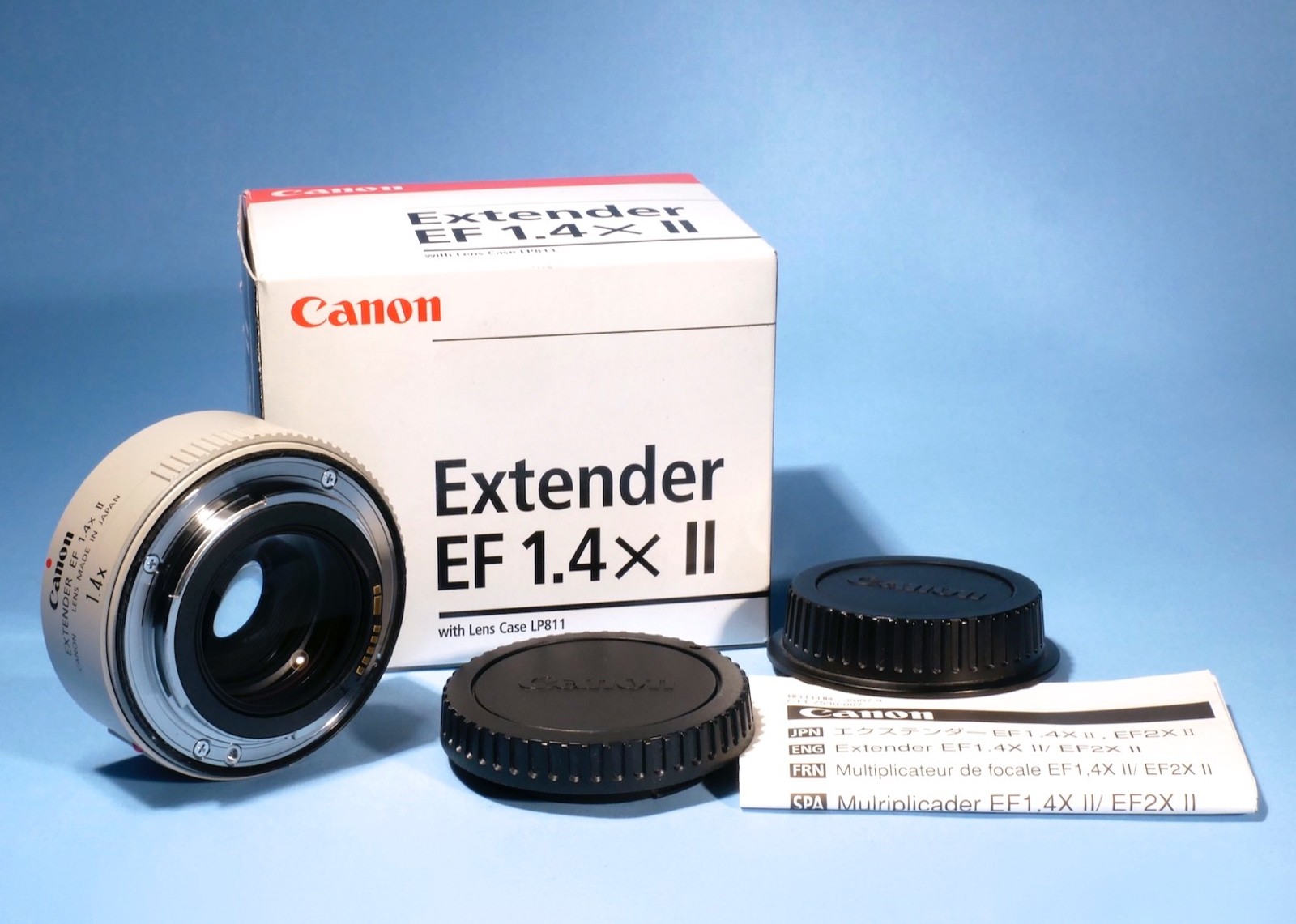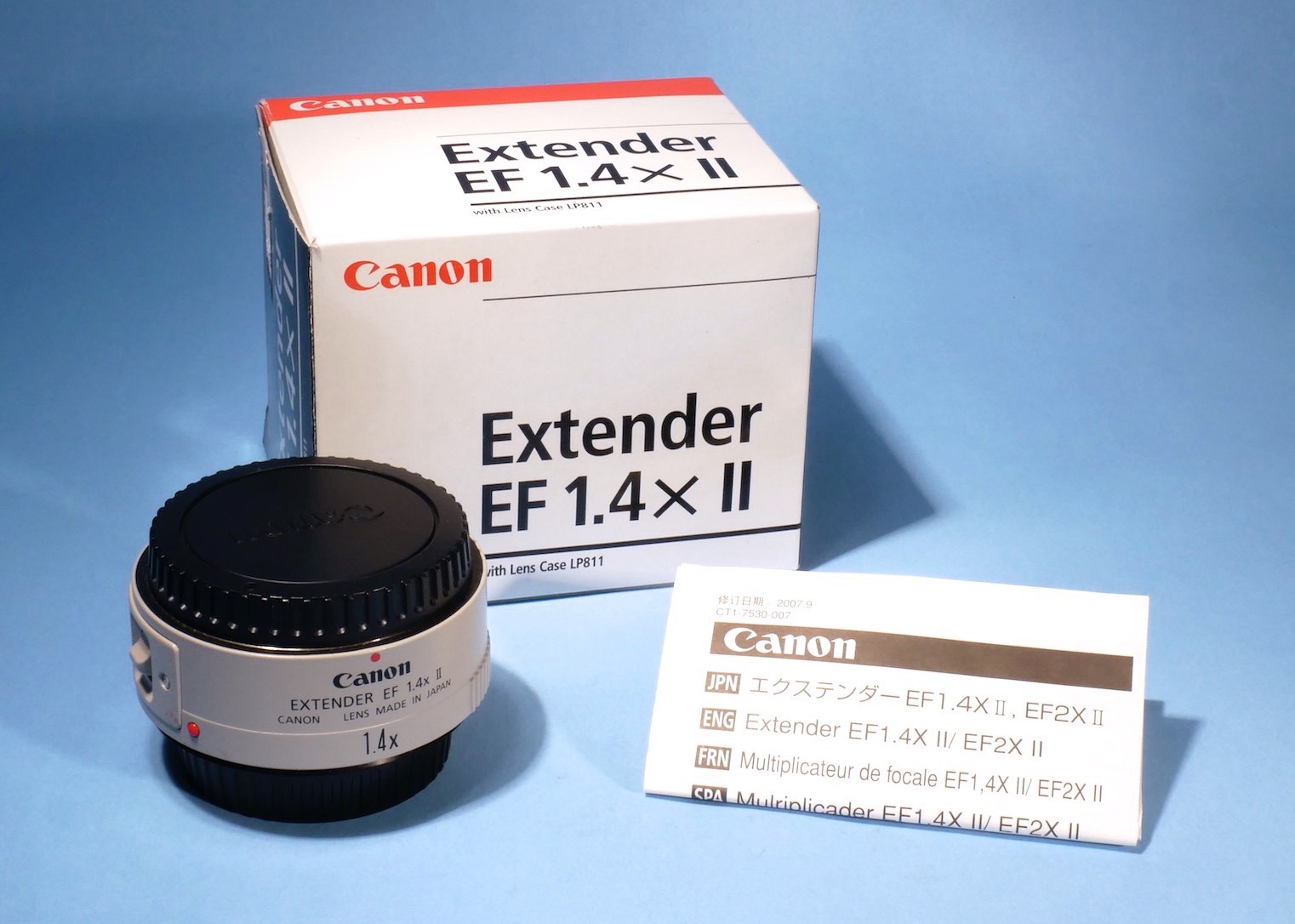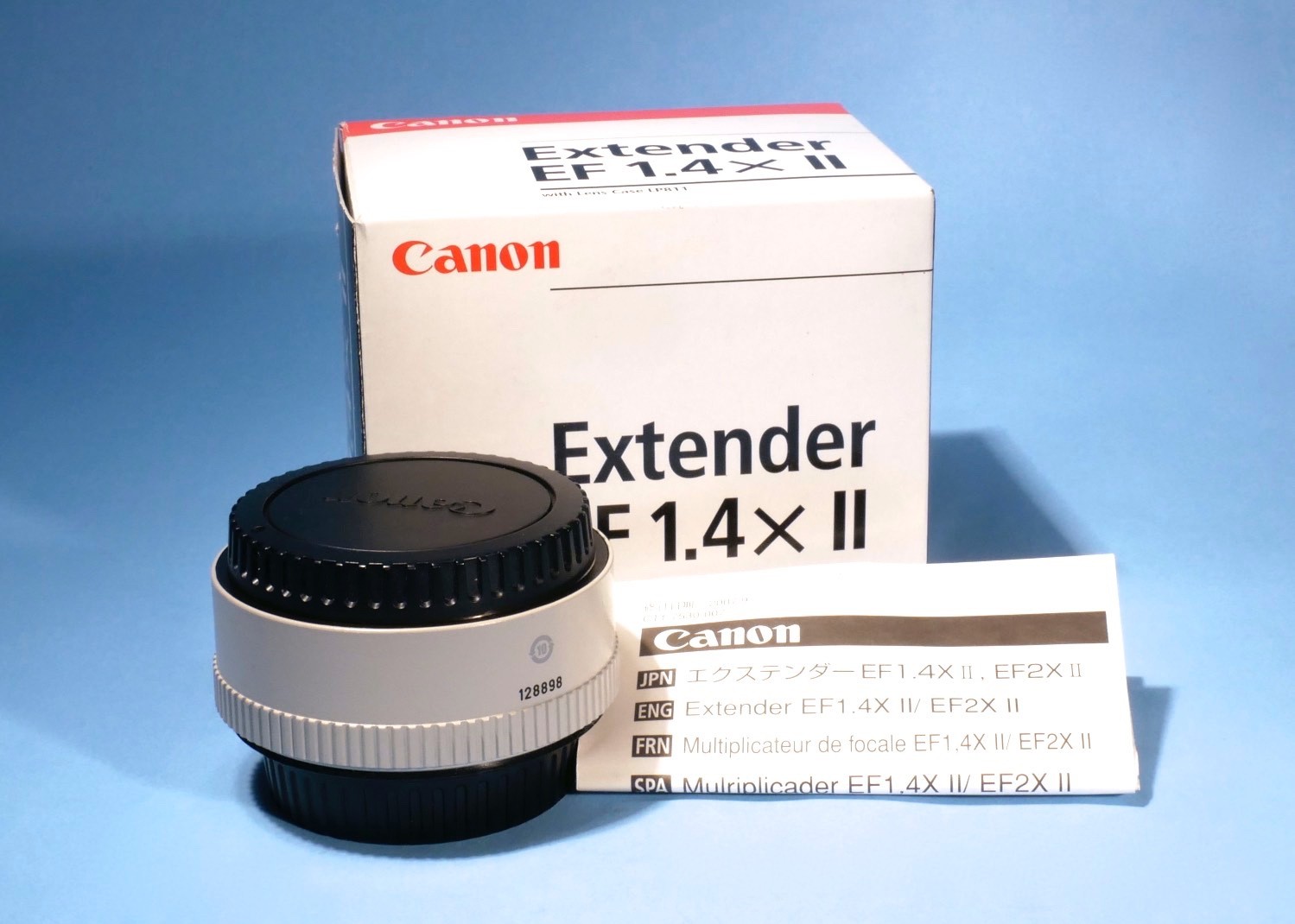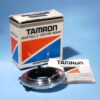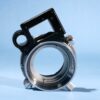Subtotal: £14.99
Canon Extender EF 1.4X II Teleconverter * Mint & Boxed
£149.99
Out of stock
Compatible Lenses
The 1.4× II Extender is designed for Canon’s L-series telephoto primes and zooms, plus select other L-class optics with recessed rear elements:
• Telephoto & Super-Telephoto Primes:
• EF 135 mm f/2 L
• EF 180 mm f/3.5 L Macro
• EF 200 mm f/1.8 L
• EF 200 mm f/2 L IS
• EF 200 mm f/2.8 L II
• EF 300 mm f/2.8 L (IS & non‑IS)
• EF 300 mm f/4 L (IS & non‑IS)
• EF 400 mm f/2.8 L (IS & II)
• EF 400 mm f/4 L DO IS
• EF 400 mm f/5.6 L
• EF 500 mm f/4 L IS (I & II)
• EF 600 mm f/4 L IS (I & II)
• EF 800 mm f/5.6 L IS
• Telephoto Zooms:
• EF 70‑200 mm f/2.8 L IS USM (all versions)
• EF 70‑200 mm f/4 L IS USM
• EF 100‑400 mm f/4.5‑5.6 L IS USM (Generations I & II)
• Tilt‑Shift Lenses (manual focus only, no autofocus):
• EF TS‑E 17 mm f/4 L
• EF TS‑E 24 mm f/3.5 L
• EF TS‑E 45 mm f/2.8
• EF TS‑E 90 mm f/2.8
🔍 Why Compatibility Matters
• The extender’s front element protrudes, so only lenses with recessed rear optics are safe to pair. Using incompatible lenses risks damaging both the lens and extender .
• Autofocus and image stabilization functionality vary depending on the lens.
• With the zooms listed above, you’ll retain IS and AF, though AF may drop to a single central point on DSLR bodies.
📸 Autofocus & Aperture Impact
• Using the 1.4× extender reduces the maximum aperture by 1 stop (e.g., f/2.8 → f/4; f/4.5 → f/6.3) .
• On many EOS DSLRs, if your effective aperture drops below f/5.6, autofocus may be lost—unless your camera supports AF at f/8 (like the EOS‑1D series, 5D Mark IV, 7D Mark II, and others) .
• On modern EOS R-series mirrorless, autofocus generally works even at smaller apertures thanks to Dual Pixel CMOS AF ().
| Compatible Brand | CANON |
|---|---|
| Brand | Canon |
| Type | teleconverter |
| Fastening | Canon EF |
| Compatible Model | Canon EF |
| Country/Region of Manufacture | Japan |
| To Fit Lens Front | CANON EF |
| Lens Fitting | Canon EF |

 Nikon CL-0915 Lens Pouch 9x14cm * Protect Your Glass! * 20mm 24mm 35mm 50mm 85mm
Nikon CL-0915 Lens Pouch 9x14cm * Protect Your Glass! * 20mm 24mm 35mm 50mm 85mm 